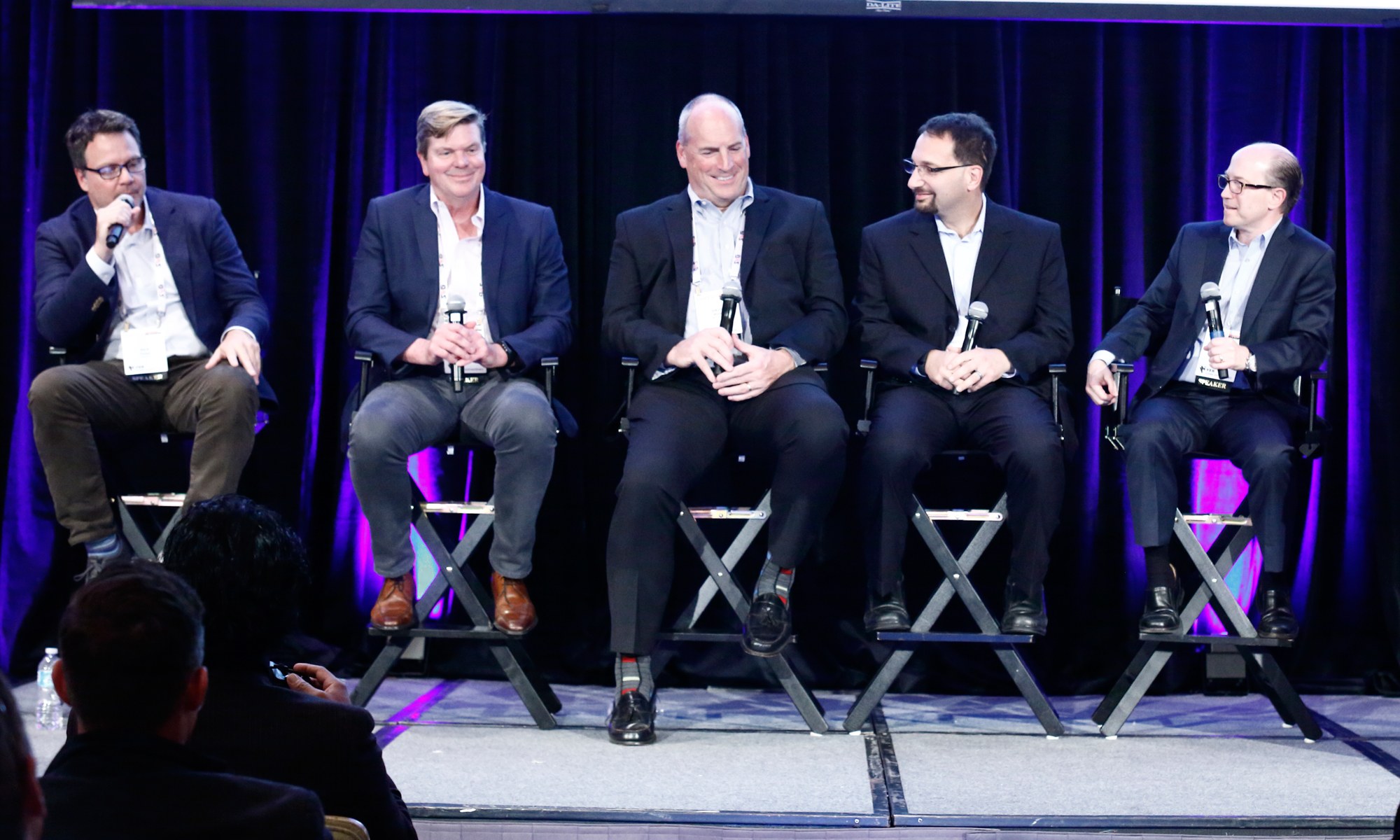At-Home Production Provides Bevy of Logistical Benefits, but Connectivity Challenges Remain
In a discussion at the LiveTV:LA conference, broadcasters and vendors explain how they are meeting them
Story Highlights
At-home production, along with the IP technology that makes possible, is no longer emerging. It’s here, and it’s being deployed by many of the major broadcasters and sports leagues across the country, whether their viewers can tell or not. As the industry moves forward with growing confidence, how are they leveraging these opportunities, and what technological challenges remain?

The topic of at-home production and IP was addressed during a panel discussion at SVG’s LiveTV:LA conference. From left: Deluxe’s Rick Phelps, Pac-12 Networks’ Leon Schweir, NFL Media’s Dave Shaw, Aspera’s Jonathan Solomon, and The Video Call Center’s Larry Thaler
In San Francisco, Pac-12 Networks has been one of the early success stories in at-home production and IP technology. The five-year-old network produces 850 events for live television distribution per year, all featuring some element of IP and more than 400 produced with a full at-home workflow. To make it possible, Pac-12 Networks has established an Internet 2 network that connects nearly 100 venues on 12 campuses across the conference.
“In the world that we’re in, the network is where you start,” said Leon Schweir, SVP, production, Pac-12 Networks, on a panel at LiveTV:LA. “The network that we have is robust enough that we don’t have to worry about how many cameras we’re bringing; we don’t really worry about latency, packet loss, or jitter. It’s a very stable network.”
For an at-home production, Pac-12 Networks will roll up to the venue with no more than a Sprinter van and six or seven cameras. The only people needed onsite are the camera operators and an A2 to test audio. The camera and audio feeds are sent to a control room in Pac-12 Networks’ San Francisco facility, where it’s cut as if it had gone to an onsite production truck .
In Schweir’s view, this offers multiple benefits, including the ability to use top production and operations talent on more events than geography would normally allow. It means not only that the scale of programming is greater, with broadcasts that could never have been done in traditional production models, but that the quality of those shows is greater.
“In San Francisco, we have our core group to do all of these events,” he pointed out. “We think that’s an important component of why we’re able to get quality into events that we maybe normally wouldn’t be able to get such quality [into]. We have our regular skill positions all the time. It’s always hard to hire — depending on what cities you are going to — TDs, A1s, replay [operators], graphics [operators]. So, for us, we are getting much better quality and consistency in at-home productions than if we tried to do this in 96 venues over six states.”
Even the NFL and NFL Media are heavy users of IP technology and at-home workflows. Although NFL Network no longer produces any live NFL games, the network does provide hours per day of live studio programming, and for major events, such as the Super Bowl, the NFL Draft, or Thursday Night Football, at-home models are critical to the live network-produced shows from those sites.
“Mostly, it was [done] to save money originally, but we bring it in for our digital packages; we bring it in for our highlights,” said Dave Shaw, VP, production, NFL Media. “We bring in a clean feed and a dirty feed. So we package nine muxes in every game from a single fiber.”
Although this may sound like an operations manager’s nirvana, the technology is still its infancy. From reliable networks to firewalls to finding connectivity in non-traditional venues, at-home production and IP technology still have plenty of hoops to jump through before becoming mainstream.
Perhaps no greater challenge remains then that of the “first mile”: getting broadcast-quality connectivity from a place that may not be very conducive to it. Numerous tech vendors are developing solutions to this problem, including Deluxe. Known primarily across the entertainment industry as the big creative-services and postproduction house, Deluxe also has an extensive IP network for broadcast distribution and cloud playout.
“We use contested internet activity that’s available at the venue, so each venue could, potentially, have an issue with that,” said Rick Phelps, SVP, broadcast sales, Deluxe. “We’re experimenting with 4G and 5G technology to overcome any obstacles that you have with the connectivity. Once we get [the content] into our encoded environment and get it onto our broadcast-delivery network, that mitigates all the problems you would have. But that first connectivity at the venue is still the main issue.”
For such vendors as Aspera, one of the industry leaders in transmission and high-speed file-transfer software, the solution for the time being is commoditized transport.
“Not every event is going to be in a major venue, where you have [a connection to] The Switch or Level 3,” noted Jonathan Solomon, senior sales and systems engineer, Aspera. “So I think [we enable] it by going to commodity and working over the problems instead of around the problems.”
Want to hear more about the current and future state of at-home production and IP technology? Watch the entire conversation from a panel on the topic from our LiveTV:LA conference below:
